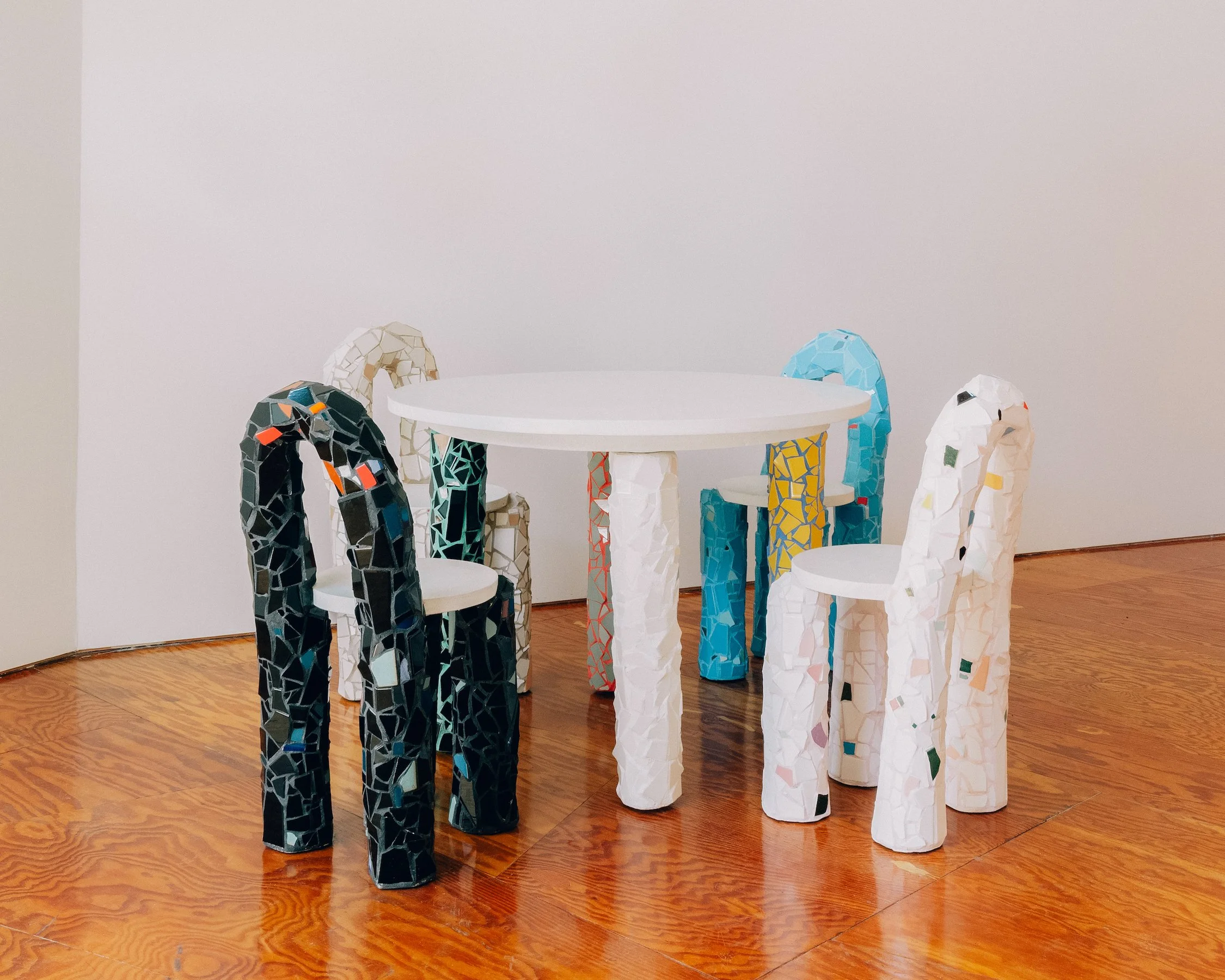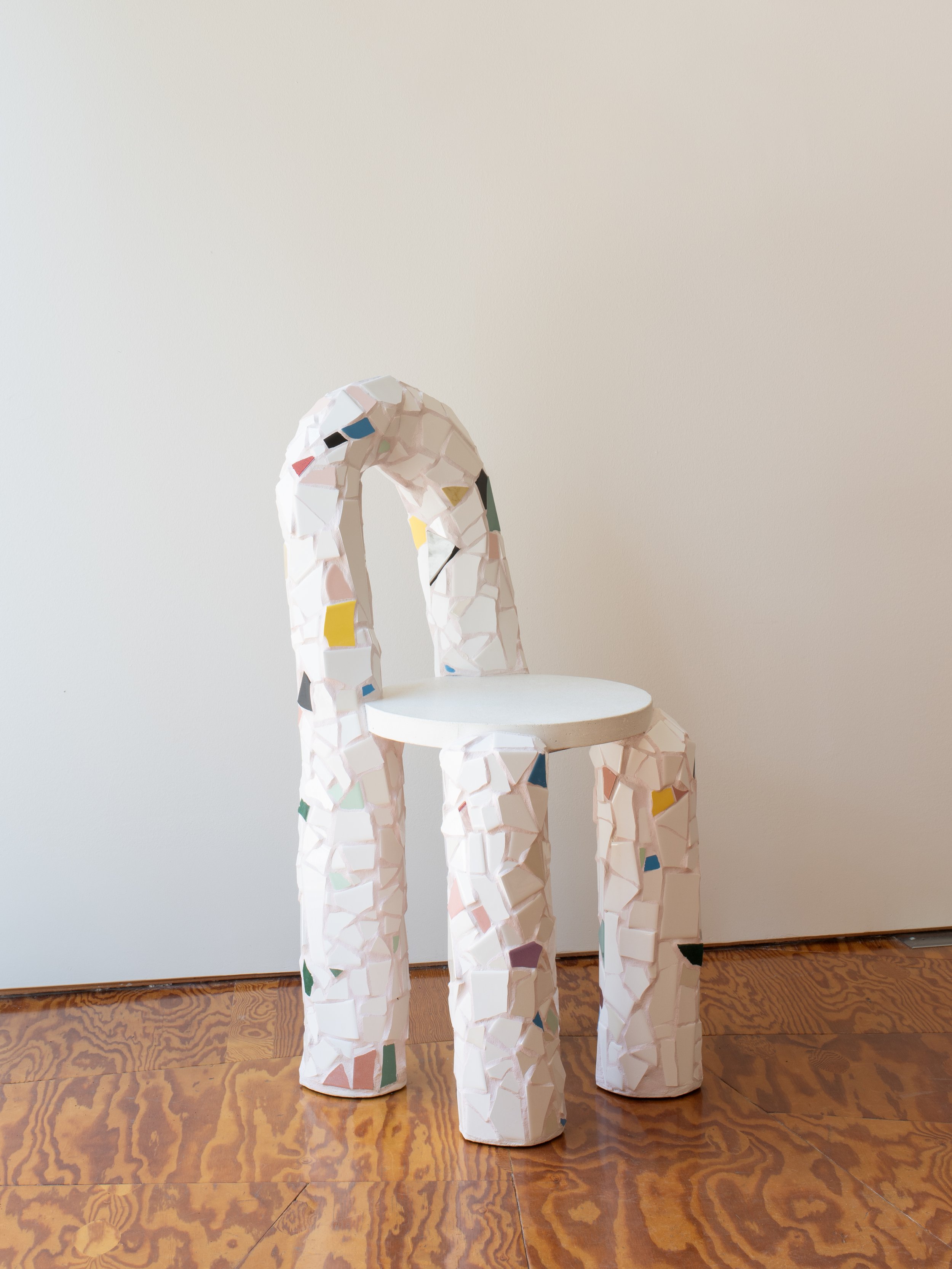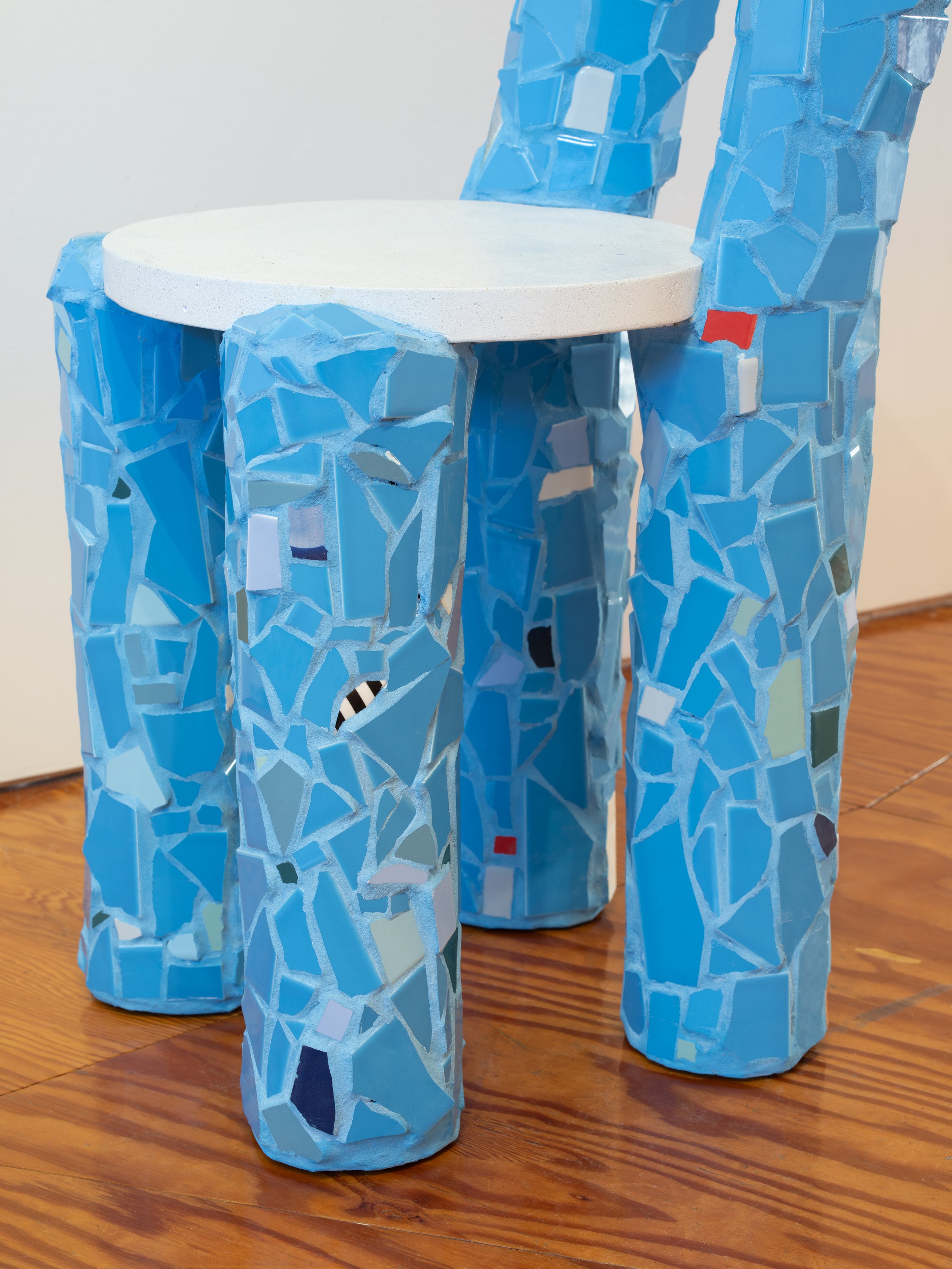James Herman
Homework
February 25 – March 30, 2024
Sea View is pleased to present a new series of functional sculptures by the LA-based artist James Herman (b. 1985, Denver, CO). A kaleidoscopic union of hand-cut recycled tiles, steel, pigmented concrete, and low-fired glass, Herman’s recent body of work highlights the artist’s deepening interest in design and his continued commitment to systems aesthetics and renewable materials that are at the core of his practice.
Influences from Niki de Saint Phalle and Antonio Gaudi underscore Herman’s interest in social sculpture and critical function. “I've never used traditional fine art mediums or processes, and I continue finding inspiration in craft, folk art, and what would be called an ‘old-world’ means of creating. I’m tired of computers making things.” Herman embraces techniques born out of need-specific craft communities such as mosaic, glass-making, and terrazzo that function harmoniously with a modernist and ecological perspective
Backdropped by the conceptual architecture of Sea View – a space built by Jorge Pardo as an opposition to the traditional white cube and its hierarchical categorization of art forms – Herman’s works similarly conflate processes that would conventionally classify within architecture, painting, or design. Similarly to Pardo, who salvaged his singular handmade tiles at Sea View from previous installations he designed for the Dia Art Foundation or Chinatown’s Mountain Bar, Herman repurposes segments of glass and ceramic from his extensive collection of discarded tiles. Even the water from his tile saw is reincorporated into the terrazzo seats and tabletop that scintillate subtly with grains of leftover pigment.
Reintroduced as the sculpted armatures of chairs, tables, and floor-standing “lotus lamps,” the cast-away materials are resuscitated into prismatic compositions that are both useful and hypnotic. Near the gallery's walls, the lotus lamps cast a unique undulating light from their petal-shaped shades – while their tiled stems simultaneously reflect shards of natural light that glint across the walls. Herman’s commitment to form and concept unfolds as an alluring invitation rather than a statement. Activated by their own use, placed outdoors or near the light, these are relational sculptures where visitors are encouraged to interact, touch, and live with the work.


"Mosaic Chair (Fruit)", 2024 Terrazzo, pigmented cement, steel and hand-cut tiles 35 x 15 x 13 3/4 inches


"Mosaic Chair (Turquoise)", 2024 Terrazzo, pigmented cement, steel and hand-cut tiles 35 x 15 x 13 3/4 inches



"Mosaic Chair (Oil Spill)", 2024 Terrazzo, pigmented cement, steel and hand-cut tiles 35 x 15 x 13 3/4 inches



"Mosaic Chair (Cream)", 2024 Terrazzo, pigmented cement, steel and hand-cut tiles 35 x 15 x 13 3/4 inches


"Mosaic Lamp (Bone)", 2024 Pigmented cement, steel, and hand-cut tiles 9 1/2 x 16 3/8 inches


"Lotus Lamp III", 2024 Pigmented cement, steel, tile, glass and lamp parts 73 1/2 x 6 1/4 inches

"Lotus Lamp II", 2024 Pigmented cement, steel, tile, glass and lamp parts 51 x 6 1/4 inches

"Lotus Lamp I", 2024 Pigmented cement, steel, tile, glass and lamp parts 37 x 6 1/4 inches

